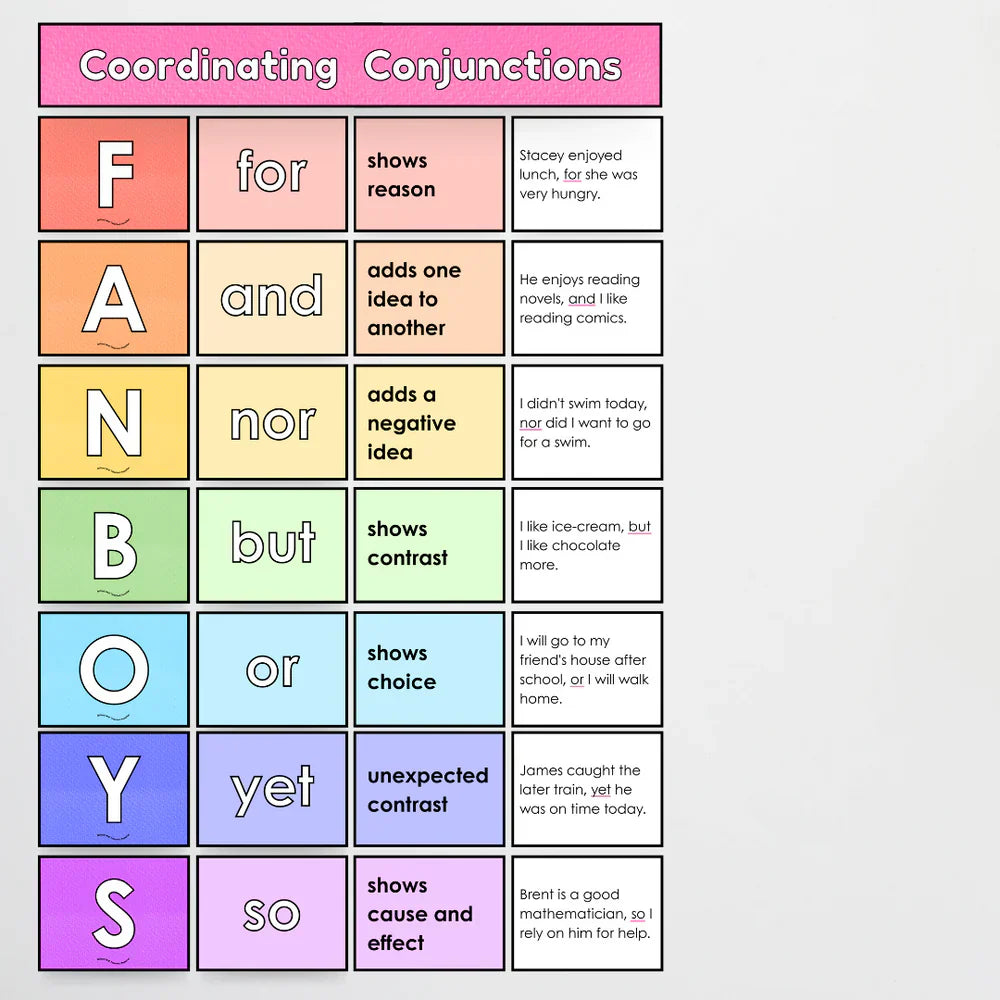Let's unpack exactly what subordinating conjunctions are, how to teach them in engaging, hands-on ways, and how to use our classroom display and matching bookmarks to anchor student learning. Whether you’re updating your literacy wall or looking for a reference that’s as beautiful as it is practical, we’ve got you covered.

What Are Subordinating Conjunctions?
Subordinating conjunctions are used to join a dependent (subordinate) clause to an independent clause. They signal a relationship — such as cause and effect, contrast, condition, time, or place — between two ideas in a sentence.
Enter: ISAWAWABUB
A teacher-friendly acronym to simplify subordinating conjunctions.

What is ISAWAWABUB?
ISAWAWABUB is a memory aid that helps students recall 10 commonly used subordinating conjunctions:
If Since As When Although While After Before Until Because
Each word introduces a dependent clause — an idea that can’t stand alone and connects it to an independent clause to create a complex sentence.
Example:
- We’ll stay inside, if it rains.
Depending on sentence structure, subordinating conjunctions may come at the start or middle of a sentence. And yes, that comma rule again — some languages and regions require a comma when the dependent clause comes first (as in Australia and the U.S.), while others may not.
A Display Designed for Real Classrooms
The Gifted and Talented Teacher Subordinating Conjunctions Display is built with busy classrooms in mind. It includes:
- Clear explanations of each conjunction’s purpose (e.g. time, contrast, cause)
- Examples of usage — both with and without commas, to reflect international differences
- A clean, stylish design that comes in multiple colour ways
- Two layout formats: run it horizontally above your writing wall or vertically on a door or bulletin board

To support students at their desks, the set also includes matching bookmarks—a handy reference during writing sessions when your wall is out of reach.
Ways to Teach Subordinating Conjunctions That Actually Stick
Grammar sticks best when students can move, create, and collaborate. Here are a few favourite activities that get subordinating conjunctions off the wall and into student writing:
1. Cause-and-Effect Builders (GTT Activity)
Students work in pairs: one writes an independent clause, the other adds a dependent clause. Students have fun writing silly sentences!

2. Construct a Conjunction Wall
Turn your display into a working wall. After teaching each subordinating conjunction, invite students to write their own examples and post them underneath. The wall becomes a growing bank of student-generated sentences.
3. Grammar Gallery Walk
Post different subordinating conjunctions around the room. Students rotate in pairs, writing a sentence for each. As they move, they read others’ examples and vote on the most creative or complex sentence at each station.
4. Spot the Clause
Challenge students to hunt through class texts or their own writing to find examples of subordinating conjunctions. Have them identify which part of the sentence is independent and which is subordinate—and whether or not a comma is needed.
Why This Teacher Resource Works
This isn’t just pretty classroom decor. It’s a teacher resource that helps students build more complex sentences, see real-world usage, and become more intentional writers. The examples, definitions, and flexible format make it easy to integrate into any writing unit or grammar mini-lesson.
Support Students to Connect Ideas with Confidence
When students understand how to use subordinating conjunctions, their writing levels up. With a clear display, practical bookmarks, and fun collaborative activities, this teacher resource makes grammar visible, accessible, and just a little bit more fun.




Leave a comment
This site is protected by hCaptcha and the hCaptcha Privacy Policy and Terms of Service apply.